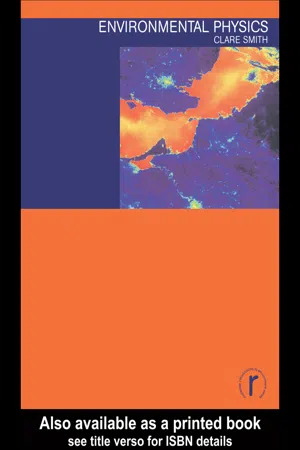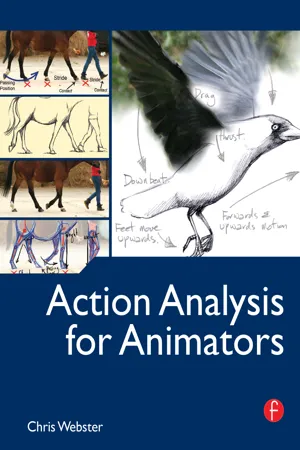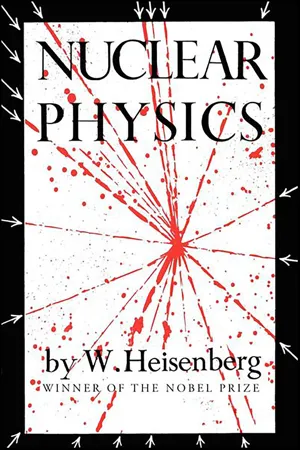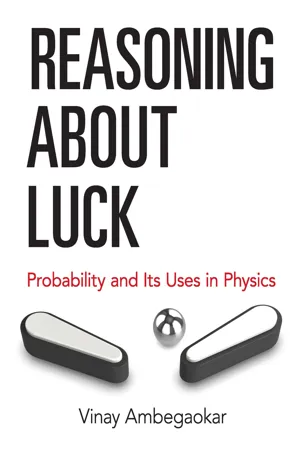Physics
Forces of Nature Physics
Forces of nature in physics refer to the fundamental interactions that govern the behavior of matter and energy in the universe. These forces include gravity, electromagnetism, the strong nuclear force, and the weak nuclear force. Understanding these forces is crucial for explaining the behavior of particles, the structure of atoms, and the dynamics of celestial bodies.
Written by Perlego with AI-assistance
Related key terms
4 Key excerpts on "Forces of Nature Physics"
- eBook - ePub
- Clare Smith(Author)
- 2004(Publication Date)
- Routledge(Publisher)
1 The forces of natureLandslides, tornadoes, falling raindrops and sedimentation are all natural systems that can be understood by Newtonian mechanics—the study of forces, momentum and motion. The following key concepts are covered in this chapter:• Many natural systems contain motion, forces and momentum that can be described by Newton’s laws• Frictional forces are important in any real-world motion, dissipating energy• Gravity acts between any two bodies, dependent on their mass and distance apart• Rotational motion can be described by laws and equations analogous to those for straight line motion, particularly relevant to climate and orbits• Different types of wave observed in environmental systems have certain properties in common• Electricity and magnetism are inextricably linked, as one induces the other• The Earth’s magnetic field provides a tool to investigate the geological history of the Earth and a subsurface surveying techniqueNewton’s laws underpin areas such as gravity, friction and rotational dynamics, some of the key processes both in the natural environment and in a number of environmental control technologies. Many environmental systems contain waves—electromagnetic waves, sound waves, seismic waves in the Earth’s interior or waves on the sea—which have certain properties in common. Electrical and magnetic fields and forces are important in several environmental applications, in particular related to the magnetic field of the Earth. This chapter deals with some of these fundamentals of physics that will be applied to a broad range of applications later in the book. Given limited space, the aim is to highlight key processes and concepts, such that the reader may seek further details elsewhere. For those who need help with rearranging of equations or basic mathematics, refer to Appendix A - eBook - ePub
- Chris Webster(Author)
- 2012(Publication Date)
- Routledge(Publisher)
Regardless of what you are trying to achieve, you will, without doubt, gain great benefit from a basic understanding of dynamics and the laws of motion. We cover these concepts here. This study is intended to underpin the work of the animator; for our purposes at least, this study should not become the work itself. We need what we need as animators; we do not need to push the boundaries of our understanding of the world and everything in it.Forces of Nature
We, along with everything else on earth, are governed by the laws of physics and by the forces of nature, though for the most part we might not be aware of these laws or forces. Indeed, it is not always possible for us to detect these forces, and it’s only in recent times that we have gained a fuller understanding of them.Understanding some of these universal laws of nature may prove useful for animators, not simply when making animation that is intended to illustrate movement in environments of which we have first-hand experience, but also by allowing us to make believable animation of all manner of alien and imagined worlds. Universal laws are exactly that—universal. They apply in the same way to objects and environments at the furthest reaches of our galaxy, and every other galaxy for that matter, in the same way as they do here on earth. Yes, there are places where conditions and circumstances mean that the laws of physics seem, if not to break down, then to stretch our understanding of them. For example, regions around black holes known as event horizons may be one such place.By understanding a little about the forces of nature and the laws of physics and motion, we may be in a better position to make our animation, no matter how fantastical and alien, accurate or at least plausible. The same laws of motion that extend to all living things will also apply to alien life forms, if they exist. However weird and wonderful, these life forms will be required to comply with those same laws of physics that govern the ones found on earth.A number of forces, objects, and matter are more familiar to physicists and cosmologists than the rest of us. Although we may know that these things exist, or at least we believe them to exist insofar as theories point to their existence, the possible impact on our everyday lives by such exotic concepts as dark matter, dark energy, and dark flow may not be of such urgent importance to us. On a day-to-day basis, these phenomena are not clearly evident to us; once again, though they may be of interest, they seem to have little impact on the way we live our lives or the manner in which we generally see that things behave. - eBook - ePub
- W. Heisenberg(Author)
- 2019(Publication Date)
- Philosophical Library/Open Road(Publisher)
5. THE NUCLEAR FORCESI. GENERAL PROPERTIES OF THE NUCLEAR FIELDThe cohesion of protons and neutrons within the atomic nucleus is ensured by forces, to which we have referred as nuclear forces, although we have not yet discussed their nature. The electric forces of repulsion, which are also operative in the nucleus, exert a purely disruptive effect. What can we learn today from the experiments on the nature of these nuclear forces? Let us first study briefly the form which an answer to this question must take. Assuming that we did not as yet know what electric forces were, how could we begin to explain their nature? We could begin by stating that electric charges mutually repel each other, with a force which decreases inversely as the square of the distance between them. According to the knowledge gained in the early part of the nineteenth century, we could add that a fundamental relationship exists between electric and magnetic forces—e.g.: varying electric forces always generate magnetic forces, and vice versa. Moreover, we might add that the phenomena of light, which used to be regarded as something of a special nature, are among these electromagnetic phenomena, and are simply nothing but electromagnetic waves. The next step would be to note that in certain experiments light appears not as a wave, but as flying particles, in other words, in the shape of photons, and thus we would discover a relationship between the electromagnetic field and these photons. A truly exhaustive description of electromagnetic forces can, however, be given solely with the aid of mathematical equations, expressing how electromagnetic forces change and spread. A complete picture of the ‘nature’ of these phenomena is supplied only by Maxwell’s equations in combination with the equations of the quantum theory.But as for the nuclear forces we have not got to them yet. Nevertheless, we can already form a picture of them, which is correct qualitatively at least and includes as many details as the picture of the electromagnetic forces—except for the exact mathematical formulae. - eBook - ePub
- Vinay Ambegaokar(Author)
- 2017(Publication Date)
- Dover Publications(Publisher)
6
Forces, motion, and energy
... the whole burden of philosophy seems to consist in this – from the phenomena of motions to investigate the forces of nature, and then from these forces to demonstrate the other phenomena ... Isaac NewtonProbability enters theoretical physics in two important ways: in the theory of heat, which is a manifestation of the irregular motions of the microscopic constituents of matter; and, in quantum mechanics, where it plays the bizarre but, as far as we know, fundamental role already briefly mentioned in the discussion of radioactive decay.Before we can understand heat, we have to understand motion. What makes objects move, and how do they move? Isaac Newton, in the course of explaining the motion of planets and of things around us that we can see and feel with our unaided senses, answered these questions for such motions three centuries ago. The science he founded has come to be called classical or Newtonian mechanics, to distinguish it from quantum mechanics, the theory of motion in the atomic and sub-atomic world.Classical mechanics is summarized in Newton’s laws’ of motion. These will here be illustrated by an example involving the gravitational attraction, described by Newton’s ‘law’ of gravitation. In the brief description that follows, I shall attempt to show that these laws of nature: (i) unify apparently unrelated phenomena – like the motion of the moon and the fall of an apple; (ii) make simple but astonishing quantitative connections – between, for example, the rate of the moon’s revolution around the earth and the numerical value of the acceleration in an apple’s fall; and (iii), suggest new and useful concepts – here kinetic energy, potential energy, and, more generally, energy – which provide access to unexplored territory.To say that an object moves is to say that its position in space changes with time. This can only be given meaning by referring it to some fixed point. Imagine a straight line directed from such a fixed point to the place where our object is. This directed line is called the position ‘vector’ of the object. The word vector is used to indicate something that has a magnitude and a direction. We shall encounter other vector quantities soon. Two vectors are said to be equal when they have the same magnitude and
Index pages curate the most relevant extracts from our library of academic textbooks. They’ve been created using an in-house natural language model (NLM), each adding context and meaning to key research topics.



